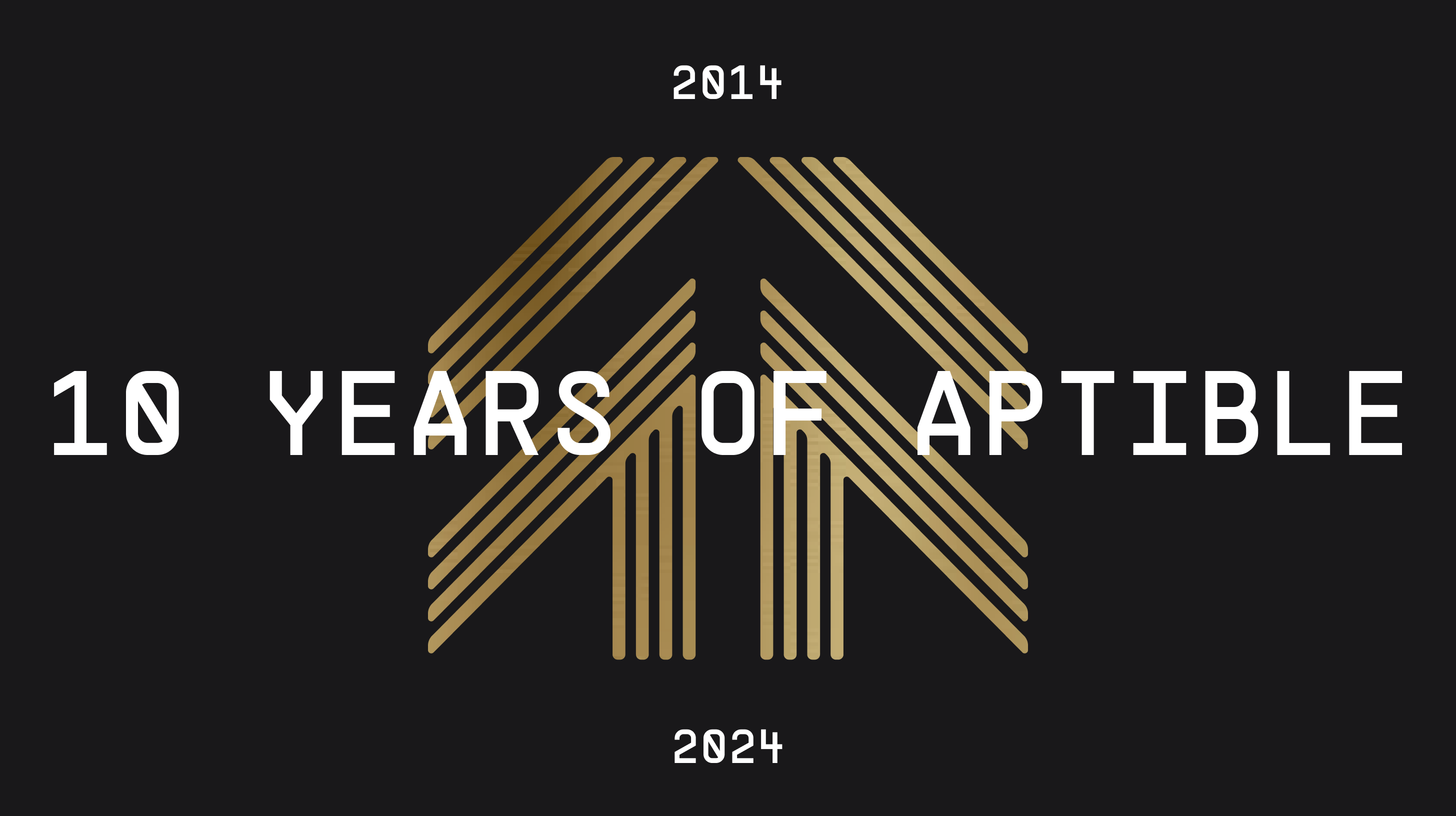Death by a thousand existential checks
Existential checks are when we have to detect whether or not a variable has a value - that is, checking to see if a variable exists. If the value is null, undefined or otherwise falsy, then it fails the check. This usually takes the form of an if-statement.
if (thingThatExists) {
// do something with `thingThatExists`
}What's the problem with existential checks?
It sets poor expectations for other developers and makes it harder for them to grok the codebase.
Existential checks are a natural - and often necessary - part of codebases. However, their over abundance can make the readability of the codebase difficult. Where they are used has a dramatic effect on code reuse, readability, and maintainability.
When objects can be empty, it sets terrible expectations for the end developer. Here are some questions it can raise:
- When do these data get populated?
- How do I ensure we will have the data when I need to use them?
- What do I do when we don't have the data?
Working with many developers across multiple squads at Aptible, it is important for us to set clear expectations with our code. Setting expectations leads to more readable and manageable code. Because we use TypeScript at Aptible, we set expectations through our interfaces. When interfaces are littered with optional or nullable properties, we set terrible expectations. Therefore, we make a concerted effort to minimize the number of optional or nullable properties in our front-end codebase.
What causes existential checks?
Code nesting
As code structure determines its function, the graphic design of code determines its maintainability. Indentation - while necessary for visualizing the flow control a program - is often assumed to be merely an aesthetic appeal. However, what if indentation can help determine unnecessary code complexity? Abrupt code indentation tends to convolute control flow with minor details. Linus Torvalds thinks that greater than three levels of indentation is a code smell which is part of a greater design flaw.
Now, some people will claim that having 8-character indentations makes the code move too far to the right, and makes it hard to read on a 80-character terminal screen. The answer to that is that if you need more than 3 levels of indentation, you're screwed anyway, and should fix your program.
Jeff Atwood thinks that nesting code has a high cyclomatic complexity value which is a measure of how many distinct paths there are through code. A lower cyclomatic complexity value correlates with more readable code, and also indicates how well it can be properly tested.
Deeply nested structures
I started my career in software engineering by trying many different programming languages. I took something along with me after diving into writing pragmatic and ideomatic code for each language. For example, when I started learning python, I stumbled upon Python Enhancement Proposals (PEP). From PEP 01:
A PEP is a design document providing information to the Python community, or describing a new feature for Python or its processes or environment.
There are a couple PEP's that are cited very often, one of which is PEP 20. It describes a set of design principles that every python developer should think about when architecturing a codebase. There's one line in this principle that I think about all the time:
Flat is better than nested
This guiding principle has led me to what I believe is more maintainable, readable code. When we apply this principle to data structures, that means we should avoid deeply nested data structures. Deeply nested structures are difficult to understand -- even when strongly typed -- and they tend to promote cases where a nested object could be empty. This has the consequence of requiring developers to make many existential checks, especially if the data is used often. Redux also has an great set or recommendations for organizing application state that also strongly recommends normalizing state.
There are many articles about how to normalize state, but the tldr is to think of an application's state like a relational database: each object is a database table where the key is the id and the value is the object data. This makes data easier to query, update, and reuse. If you inspect Aptible's redux state, it is very flat and scales very well.
Forgetting the 'transform' step in our data pipeline.
When it comes to web development, we regularly have to build a pipeline to consume an API that is usually a separate service, constructed by a set of HTTP endpoints that we have to extract, transform, and load into our front-end application. When I first started building front-end web applications, I got into a really bad habit of skipping the transform step. I would take the API response and load it directly into my application state. By ignoring the transformation step, it made it harder to make updates to the codebase when an API endpoint changed. APIs are not always built with the consumers in mind. They are built in terms of being RESTful, with strict rules on how data should be formed and sent to their consumers. Another side-effect of ignoring the transformation step is pushing optional properties to the view layer (e.g. react components). There's no quicker way to complicate a react component than to make a bunch of existential checks inside the render body even if it uses the new syntax sugar of optional chaining.
import { useSelector } from 'react-redux';
interface SocialLinks {
id: string;
website?: string;
github?: string;
twitter?: string;
}
interface Author {
id: string;
username: string;
name: string;
social: SocialLinks | null;
}
interface Blog {
id: string;
body: string;
author: Author | null;
}
interface Props {
blogId: string;
}
const selectBlogs = (state) => state.blogs || {};
const selectBlogById = (state, { id }: { id: string }) => selectBlogs(state).[id];
const BlogArticle = ({ blogId }: Props) => {
const blog = useSelector((state) => selectBlogById(state, { id: blogId }));
if (!blog) {
return <div>Could not find blog article < /div>;
}
return (
<div>
<div>{ blog.body } < /div>
written by: { blog?.author.name }
website: { blog?.author?.social.website || '' }
github: { blog?.author?.social.github || '' }
twitter: { blog?.author?.social.twitter || '' }
</div>
);
};This example is meant to demonstrate how code can become more complicated when there are existential checks inside our react components. We have made no guarantees for the data we are sending to the view layer and as a result we have to make many existential checks and fallbacks to accommodate.
How do we avoid existential checks?
Make optional properties the exception, not the rule
Instead of accepting what the backend sends us, we should instead create a consistent and reliable set of data structures that our app uses. Optional properties should be an exception, not the rule. Let's build some ideal interfaces without optional or nullable properties and then figure out how to build our state with it.
interface SocialLinks {
id: string;
website: string;
github: string;
twitter: string;
}
interface Author {
id: string;
username: string;
name: string;
social: SocialLinks;
}
interface Blog {
id: string;
body: string;
author: Author;
}It's a pretty simple exercise, we go through and remove the possibility of a property not existing or the property being null. Already I'm feeling more confident about these entities and what I can expect from them. This is great, but how do we make this interface a reality with the data we are being provided?
Build entity factories
The general approach to retrieving data from our redux store is to always send the object that the user is requesting. Instead of our selector potentially returning null or undefined, we can return a default blog object, with sane defaults for each property. This is a concept inspired by golang. Variables without an initial value are set to their zero value. This means that every entity in our front-end codebase has an entity creation function that accepts a partial of that entity and does a simple merge.
const defaultSocialLinks = (social: Partial<SocialLinks> = {}): SocialLinks => {
return {
id: '',
website: '',
github: '',
twitter: '',
...social,
};
};
const defaultAuthor = (author: Partial<Author> = {}): Author => {
return {
id: '',
username: '',
name: '',
social: defaultSocialLinks(author.social),
...author,
};
};
const defaultBlog = (blog: Partial<Blog> = {}): Blog => {
return {
id: '',
body: '',
author: defaultAuthor(blog.author),
...blog,
};
};
/*
console.log(defaultBlog({ id: '123', body: 'blog content!' }));
{
id: '123',
body: 'some content!',
author: {
id: '',
username: '',
name: '',
social: {
id: '',
website: '',
github: '',
twitter: '',
}
}
}
*/This concept of creating default entities or fabricators is a concept used in ruby, primarily for specs but also can be used for anything.
By spending a little up-front time building entity factories, we save a ton of time for every end-developer that needs to create a new entity. It seems tedious, but we've been able to scale this concept to even massive entities with good ROI. Our human labor will pay off. We're not using a library to do this for us - it's straight-forward and easy to copy/paste.
Default entity functions help:
- Guarantee all objects and properties to exist
- Do the heavy lifting to creates sane defaults for all entities and their properties
- Create a central place to generate the entity
- Create an entity while also passing in other property values
- Test in a type-safe manner by avoiding casting to any simply because building an entity object manually in every test is tedious
Transform data from HTTP requests
Back to the fundamentals of ETL, it is imperative that we do not skip building the T in ETL. The way we do this is by creating a deserializer for each entity in our API responses. You can see in our responses where our original interfaces came from: this is what the API is sending us. We shouldn't continue the trend of maybe having properties or maybe having an object.
interface SocialLinksResponse {
id: string;
website?: string;
github?: string;
twitter?: string;
}
interface AuthorResponse {
id: string;
user_name: string;
name: string;
social: SocialLinksResponse | null;
}
interface BlogResponse {
id: string;
body: string;
author: Author | null;
}
// always type yor API responses!
interface BlogCollectionResponse {
blogs: BlogResponse[];
}
// always create a deserializer for each entity
function deserializeBlog(blog: BlogResponse): Blog {
return {
id: blog.id,
body: blog.body,
author: deserializeAuthor(blog.author),
};
}
function deserializeAuthor(author: AuthorResponse | null): Author {
if (!author) {
return defaultAuthor();
}
// you can see here that we change the API response from `user_name` to `username`
return {
id: author.id,
username: author.user_name,
name: author.name,
social: deserializeSocialLink(author.social),
};
}
function deserializeSocialLink(
social: SocialLinksResponse | null,
): SocialLinks {
if (!social) {
return defaultSocial();
}
// here we do some transformations to set sane values for when a property doesn't exist
return {
id: social.id,
website: social.website || '',
github: social.github || '',
twitter: social.twitter || '',
};
}
async function fetchBlogs() {
const resp = await fetch('/blogs');
if (!resp.ok) {
// TODO: figure out error handling
return;
}
const data: BlogCollectionResponse = await resp.json();
const blogs = data.blogs.map(deserializeBlog);
// TODO: save to redux
}This seems tedious, but a developer writes it once and now we have:
- A fully typed API response
- Fully typed deserializers for every entity that we are going to use
- A set of transformers where we can change the structure or format of the data being returned from the API
- Sane defaults for the data we receive
This ETL structure is the basis of our front-end business logic and has scaled well to date.
Putting it all together
All of the work in the previous sections should pay off now, let's see what it looks like.
import { useSelector } from 'react-select';
interface SocialLinks {
id: string;
website: string;
github: string;
twitter: string;
}
interface Author {
id: string;
username: string;
name: string;
social: SocialLinks;
}
interface Blog {
id: string;
body: string;
author: Author;
}
const fallbackBlog = defaultBlog({ body: 'Could not find blog article' });
const selectBlogs = (state) => state.blogs;
// here we use a fallback blog for when we cannot find the blog article
const selectBlogById = (state, { id }: { id: string }) =>
selectBlogs(state)[id] || fallbackBlog;
const BlogArticle = ({ blogId }: Props) => {
const blog = useSelector((state) => selectBlogById(state, { id: blogId }));
return (
<div>
<div>{ blog.body } < /div>
written by: { blog.author.name }
website: { blog.author.social.website }
github: { blog.author.social.github }
twitter: { blog.author.social.twitter }
</div>
);
};What did we accomplish?
- We created a fallback for our selector with a message saying we couldn't find the blog
- We have removed branching logic inside our component
- We removed all existential checks from our component
- We removed the need to have multiple x || '' inside of our component
- This component is now completely safe to render even if we know we don't have any blog articles yet!
This last point is interesting: we don't need a loader to prevent this code from throwing an error, it's safe to use while data is being fetched. We can defer implementing loading states until later. One could argue we are overloading the meaning of body by placing the error message inside it. I think that's fair, but ultimately this has rarely been an issue and it really cleans the code up. I personally don't see an issue with it, but if we want, we could instead do a single existential check on the id of the blog entity and then return early:
const blog = useSelector((state) => selectBlogById(state, { id: blogId }));
if (!blog.id) {
return <div>Could not find blog article < /div>;
}
// ...One more thing: Flat is better than nested
I really like how we simplified our react component, there's virtually no logic involved because we pushed all of that complexity into our transform step. We do the leg-work once and now everything downstream of it can enjoy type and render safe entities without any optional or missing properties.
We're not done yet. I really do not like how we have nested objects in our entities. I want to normalize this data so we can query for them separate of querying for the entire blog object. Maybe I want a page where I list all authors using the same card we built for the blog article. It seems silly to traverse all blogs first, then deduplicate the list of authors, and then render the authors.
interface SocialLinks {
id: string;
website: string;
github: string;
twitter: string;
}
interface Author {
id: string;
username: string;
name: string;
socialId: string;
}
interface Blog {
id: string;
body: string;
authorId: string;
}
interface State {
blog: { [id: string]: Blog | undefined };
author: { [id: string]: Author | undefined };
social: { [id: string]: Social | undefined };
}
function deserializeBlog(blog: BlogResponse): Blog {
const author = deserializeAuthor(blog.author);
return {
id: blog.id,
body: blog.body,
authorId: author.id,
};
}
function deserializeAuthor(author: AuthorResponse | null): Author {
if (!author) {
return defaultAuthor();
}
const social = deserializeSocialLink(author.social);
return {
id: author.id,
username: author.user_name,
name: author.name,
socialId: author.social.id,
};
}
function deserializeSocialLink(
social: SocialLinksResponse | null,
): SocialLinks {
if (!social) {
return defaultSocialLink();
}
return {
id: social.id,
website: social.website || '',
github: social.github || '',
twitter: social.twitter || '',
};
}
async function fetchBlogs() {
const resp = await fetch('/blogs');
if (!resp.ok) {
// TODO: figure out error handling
return;
}
const data: BlogCollectionResponse = await resp.json();
const blogs = [];
const authors = [];
const socialLinks = [];
// we process the data once so we don't have to perform existential checks
// in our react components
data.blogs.forEach((blog) => {
blogs.push(deserializeBlog(blog));
const author = blog.author;
if (author) {
authors.push(deserializeAuthor(author));
const socialLink = author.social;
if (socialLink) {
socialLinks.push(deserializeSocialLinks(socialLink));
}
}
});
// TODO: save to redux
}
const fallbackSocial = defaultSocialLinks();
const selectSocial = (state: State) => state.social;
const selectSocialById = (state: State, { id }: { id: string }) =>
selectSocial(state)[id] || fallbackSocial;
const fallbackAuthor = defaultAuthor({ name: 'Unknown' });
const selectAuthors = (state: State) => state.authors;
const selectAuthorsById = (state: State, { id }: { id: string }) =>
selectAuthors(state)[id] || fallbackAuthor;
const fallbackBlog = defaultBlog({ body: 'Could not find blog article' });
const selectBlogs = (state: State) => state.blogs;
// here we use a fallback blog for when we cannot find the blog article
const selectBlogById = (state: State, { id }: { id: string }) =>
selectBlogs(state)[id] || fallbackBlog;
const AuthorCard = ({ authorId }: { authorId: string }) => {
const author = useSelector((state: State) =>
selectAuthorById(state, { id: authorId }),
);
const social = useSelector((state: State) =>
selectSocialById(state, { id: author.socialId }),
);
return (
<div>
<div>
{ author.name }({ author.username })
< /div>
website: { social.website }
github: { social.github }
twitter: { social.twitter }
</div>
);
}
const BlogArticle = ({ blogId }: Props) => {
const blog = useSelector((state: State) =>
selectBlogById(state, { id: blogId }),
);
return (
<div>
<div>{ blog.body } < /div>
< AuthorCard authorId = { blog.authorId } />
</div>
);
};
const AuthorsPage = () => {
const authorMap = useSelector(selectAuthors);
const authorIds = useMemo(() => Object.keys(authorMap), [authorMap]);
return authorIds.map((authorId) => (
<AuthorCard key= { authorId } authorId = { authorId } >
));
};Is it more code? Absolutely. The goal of flattening our objects is not to save on lines of code; rather, it's to build a scalable, readable, and maintainable architecture that is predictable to use.
Architecting code is hard. With a little planning and by pushing a few existential checks to the transform layer of ETL, we end up with a repeatable pattern for dealing with optional or nullable properties, and making our view layer easier to build.








